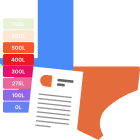Transform Your Teaching
with AI-Powered Worksheets
With ReadTheory’s Instant Worksheet Builder, you can create engaging, grade-appropriate worksheets tailored to your students in minutes. Spark curiosity, save time, and empower critical thinking with AI-powered tools designed for teachers like you.


Religion in Ancient Rome: From Polytheism to Christianity
Religion played a pivotal role in the nuanced tapestry of Ancient Rome. Its influence permeated every aspect of society, from politics and warfare, to familial duties and everyday life. The Romans worshipped a pantheon of gods and goddesses, heavily drawn from Greek mythology, yet uniquely Roman. The king of gods was Jupiter, similar to the Greek god Zeus. Mars, the god of war, underscored the importance of military prowess in Roman society. However, around the 1st century AD, a new religion began to take root. Christianity, with its monotheistic belief in a single, omnipotent God, contrasted sharply with the Romans' polytheistic beliefs. At first, Christians were persecuted. But over time, Christianity gained acceptance and eventually, in 380 AD, it was declared the state religion by Emperor Theodosius I. This marked a radical transformation in the religious landscape of Ancient Rome.
Question 1
What role did religion play in Ancient Rome?
It was kept separate from politics and warfare
It influenced every aspect of society
It was not considered important
It was only practiced by the wealthy
It only influenced familial duties
Question 2
Who was the king of gods in Roman mythology?
Zeus
Mars
Apollo
Jupiter
Hades
Question 3
How did Christianity differ from the Roman's polytheistic beliefs?
Christianity was also polytheistic
Christianity believed in multiple gods, but not as many as the Romans
Christianity believed in a single, omnipotent God
Christianity and the Roman's polytheistic beliefs were the same
Christianity did not have any gods
Question 4
What marked the transformation in the religious landscape of Ancient Rome?
The introduction of Greek gods
The worship of Mars, the god of war
The introduction of Christianity
The persecution of Christians
The declaration of Christianity as the state religion
Question 5
When was Christianity declared the state religion of Rome?
1st century AD
380 AD
100 BC
500 AD
300 BC
 or share via
or share via

Assign the ReadTheory pretest to determine students' reading levels.

Why Teachers Love
Instant Worksheet Builder?

Tailored Content for Every Student
Craft worksheets with passages and multiple-choice questions customized to your chosen topic and grade level, ensuring relevance and engagement.

Save Hours
of Prep Time
Our AI, Lexi, generates complete worksheets—passages, questions, and answers—in minutes, freeing you to focus on teaching, not planning.

Standards-Aligned Learning
Every worksheet is designed to boost reading comprehension and critical thinking, aligning seamlessly with State Standards to help your students shine.
Personalized teaching
for personalized learning
Browse worksheets created and refined by educators using Lexi—your source for inspiration and ready-to-use resources.


ReadTheory is free for Teachers to use.
Join thousands of educators using ReadTheory for free. Sign up today and start creating in just minutes!





